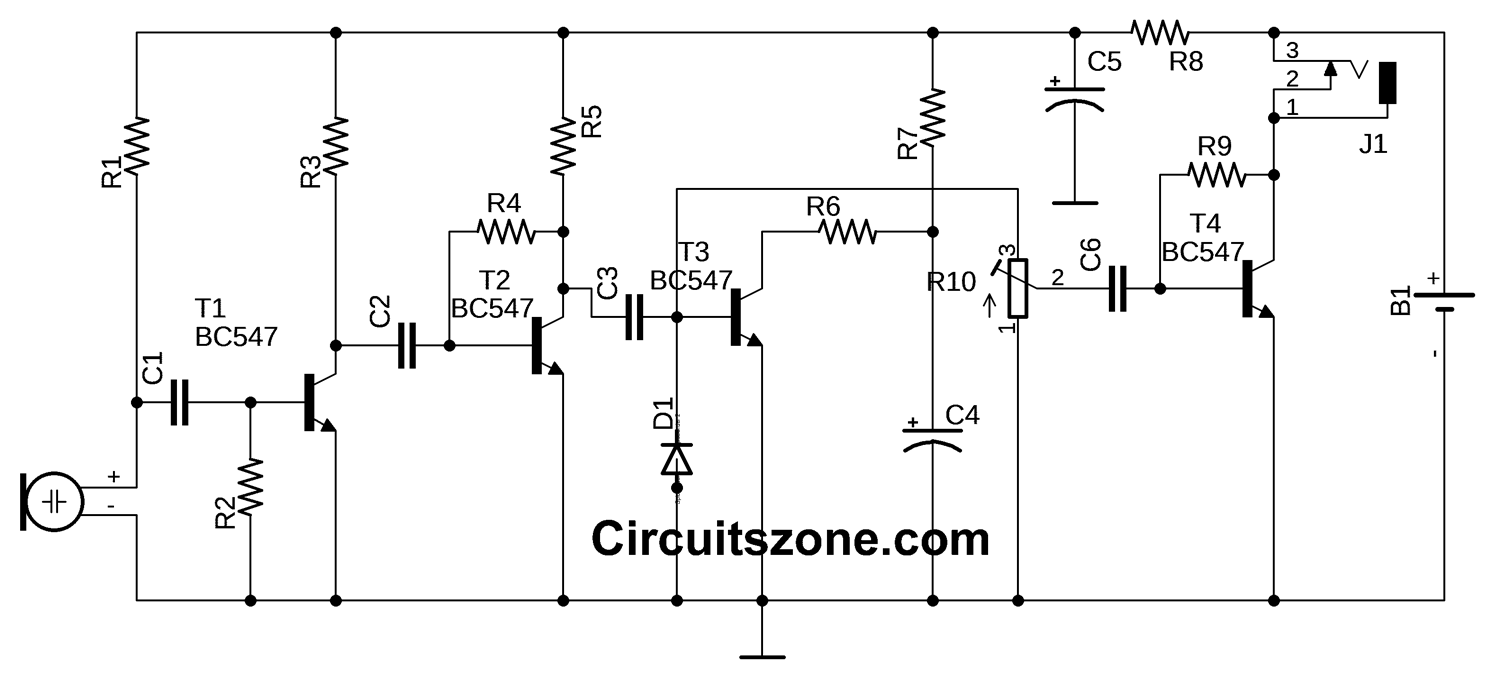This amplifier circuit can work optimally when connected to headphones/earphones that have an impedance of 32 ohms. This ear amplifier can detect remote sound, and is suitable for use in a theater because it has a clear sound. You can listen to the TV sound at a low volume.
The ear amplifier circuit is very simple and easy to make, consisting of only 4 transistors. The mic used in this circuit is a condenser mic which has high sensitivity. This circuit uses a 1.5 Volt battery and is very power efficient.
Circuit Diagram:

Parts:
- P1 = 22K
- R1 = 10K
- R2 = 1M
- R3 = 4K7
- R4 = 100K
- R5 = 3K9
- R6 = 1K5
- R7 = 100K
- R8 = 100R
- R9 = 10K
- C1 = 100nF 63V
- C2 = 100nF 63V
- C3 = 1µF 63V
- C4 = 10µF 25V
- C5 = 470µF 25V
- C6 = 1µF 63V
- D1 = 1N4148
- Q1 = BC547
- Q2 = BC547
- Q3 = BC547
- Q4 = BC337
- J1 = Stereo 3mm. Jack socket
- B1 = 1.5V Battery (AA or AAA cell etc.)
- SW1 = SPST Switch (Ganged with P1)
- MIC1 = Miniature electret microphone
Circuit Operation :
This circuit uses a constant-volume control amplifier system. All signals contained in the microphone will be amplified with a constant level between 1 Volt peak to peak. Even so, this amplifier is included in the low gain amplifier but will be very useful when used.
Notes:
- Due to the constant-volume control, some users may consider P1 volume control unnecessary. In most cases it can be omitted, connecting C6 to C3. In this case use a SPST slider or toggle switch as SW1.
- Please note the stereo output Jack socket (J1) connections: only the two inner connections are used, leaving open the external one. In this way the two earpieces are wired in series, allowing mono operation and optimum load impedance to Q4 (64 Ohm).
- Using suitable miniature components, this circuit can be enclosed in a very small box, provided by a clip and hanged on one’s clothes or slipped into a pocket.
- Gary Pechon from Canada reported that the Amplified Ear is so sensitive that he can hear a whisper 7 meters across the room.
- He hooked a small relay coil to the input and was able to locate power lines in his wall. He was also able to hear the neighbor’s stereo perfectly: he could pick up the signals sent to the speaker voice coil through a plaster wall.
- Gary suggests that this circuit could make also a good electronic stethoscope.